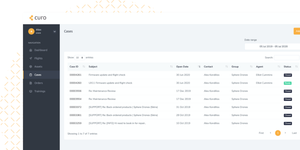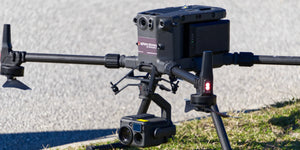Inspections are among the fastest growing uses of drones, with acceleration from improved sensors, payloads, and drones mixed with the relatively low-cost price tag for a completed aerial inspection system.
DJI has worked with industry leaders to produce a list of the top use cases within the inspection industry. The top use cases include agriculture, architecture, engineering, and construction, chemicals, oil, and gas, electricity, and public safety.
Top use cases
Agriculture
The integration of multispectral drones provides farmers high-quality data to help them identify healthy and distressed crops and allows for precise intervention. Drones can also survey a crop periodically helping agronomists identify better crop management opportunities. Customized drone inspections can be performed with drones of the calibre of P4 Multispectral to facilitate precision agriculture activities such as contour mapping, livestock management, crop assessment, and insurance and yield estimate.
Architecture, engineering, and construction
Drone inspections in all these sectors have similar requirements in terms of accuracy and time-efficiency which can both result in unplanned losses.
- Whether the asset to inspect is a parcel of land or buildings, detecting hazards immediately across large construction sites from a bird’s-eye view helps companies avoid costly mistakes while also protecting civilians in the surrounding areas. In some other instances, drone inspections can help with building information modeling (BIM) through 3D maps, stockpiles of material as well as monitor progress.
- In some more interesting cases, drones have significantly increased safety in roofs inspections and have created viable alternatives for property assessment to continue to operate despite the COVID 19 access restrictions. The direct result of a “contactless” approach to inspections with the help of drone technology is more accurate insurance claims and smarter business decisions by insurance underwriters.
- Particularly for large, government-funded infrastructure projects, drone inspection and surveying have resulted in a remarkable acceleration and overall work efficiency, as in the case of the European highway network.
Chemicals, oil, and gas
When it comes to safety, the oil and gas industry is the sector that benefits more from drone inspections. In a recent case study, a refinery and chemical plant spanning 2,300 acres – represents a highly hostile environment for humans, containing crude oil distilling units, catalytic crackers, and other operations to produce hydrocarbons. With medical teams on site to assist workers, drones have taken on the daunting task of inspecting such units, alleviating health concerns, and cutting unreasonable costs.
- Drone inspections of chemical sites are useful to prevent and/or expedite interventions in case of dangerous leaks that pose a serious risk for people and environment. Sites to be inspected may include refinery plants, chimneys, pipelines, storage tanks, offshore rigs, access roads and exploration sites for surveying.
Electricity
The most exciting sector of our time, solar energy is also one of the most complex resources to manage, given the high level of maintenance solar panel technology requires to satisfy global demand. Drone inspection of solar panels combined with thermal cameras have drastically increased speed and field coverage, whereas traditional manual inspections would unlikely provide an accurate appreciation of the entire area.
- On the other hand, powerline drone inspection has become one of the fastest-growing applications under increased pressure to abide legal requirements and safety standards. Constant exposure to the elements can contribute to corrosion, calling for frequent drone inspections to facilitate early detection and damage assessment.
Mining
Maintenance is essential to keep mining sites running and free of potential hazards to miners’ health. Drone inspections are reshaping the mining industry with the ability to obtain critical data without requiring machinery shutdown. The benefits of drone inspections are countless, ranging from the possibility to generate high-quality volumetric information with millions of measurement points; streamlined operations over large areas without human’s presence; automated flight planning resulting in fewer human and operational errors.
Public safety
While it is natural to think of Search and Rescue when we speak of drones for rescuing operations, drone inspection is an integral if not underestimated activity in this sector.
- Some missions have proven invaluable for public safety officers in inspecting inaccessible mountains at risk of gas explosion or in post-fire investigation to collect images more efficiently than with a ladder truck.
Best drones and payloads for the job
Source: DJI




















